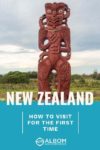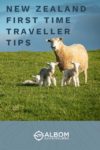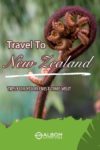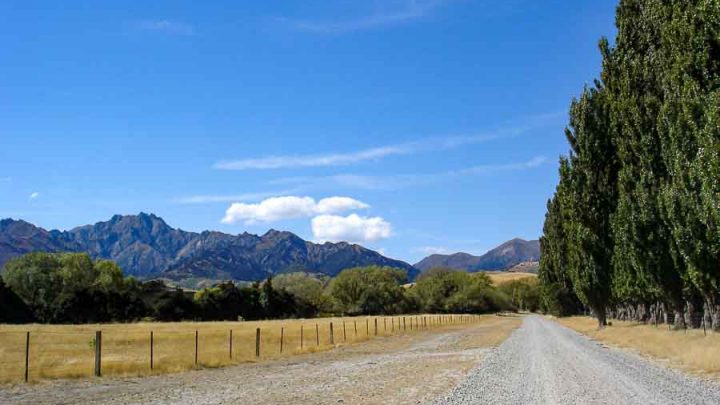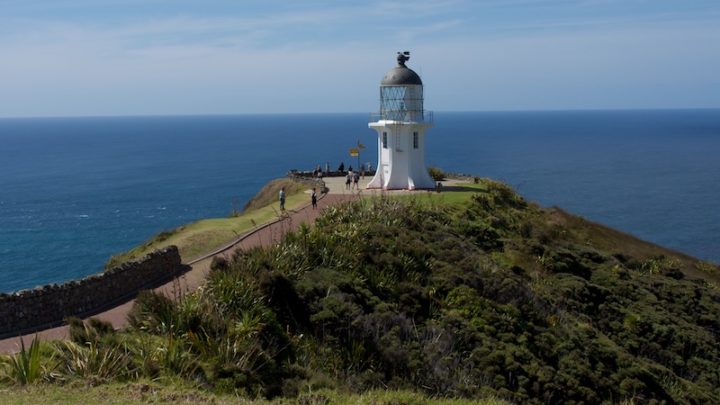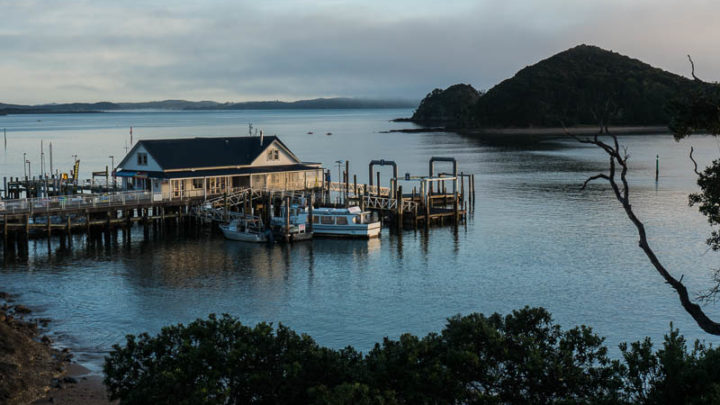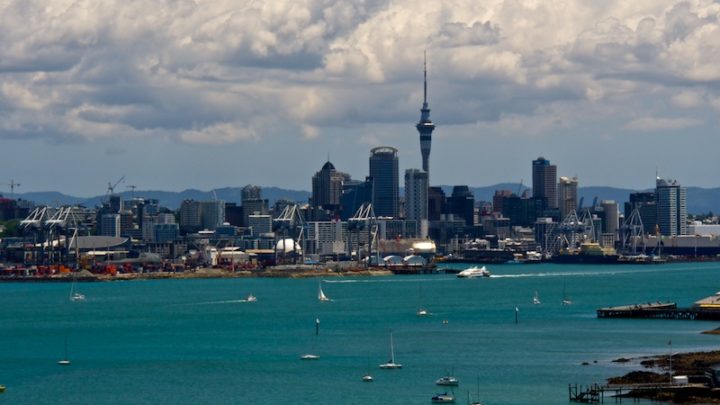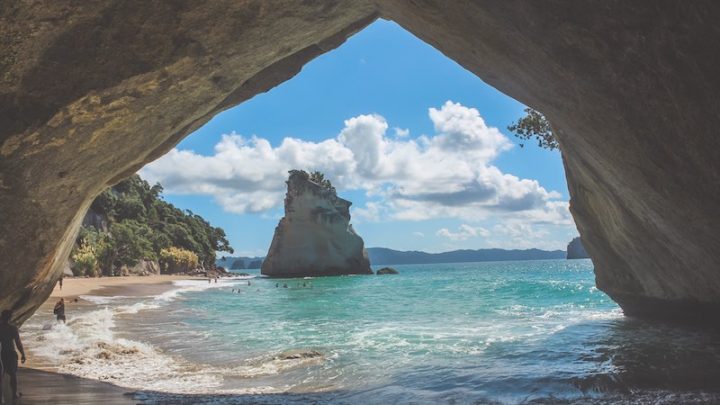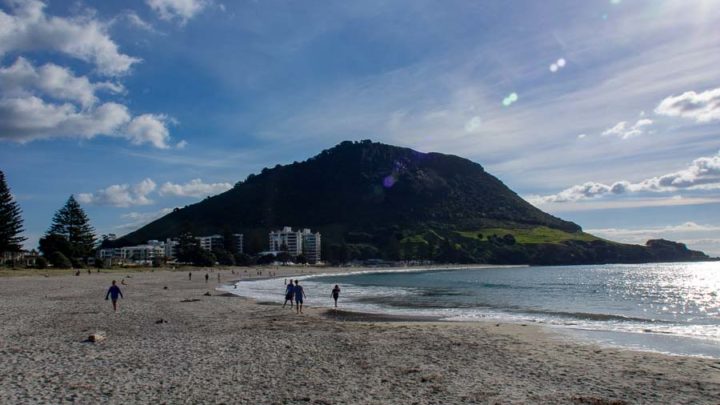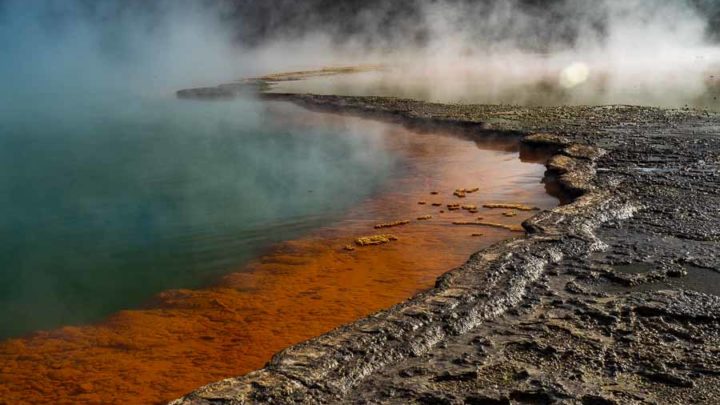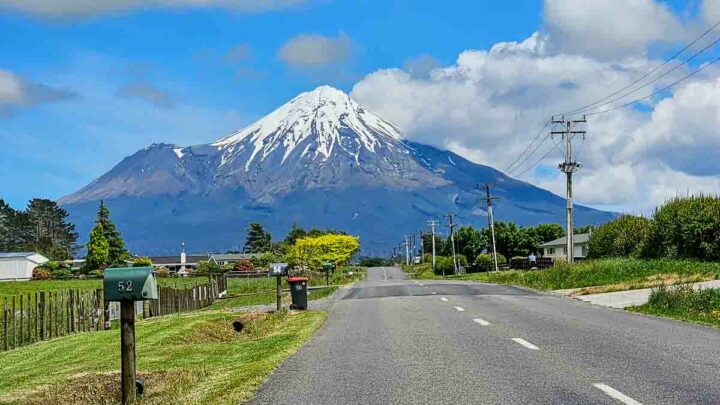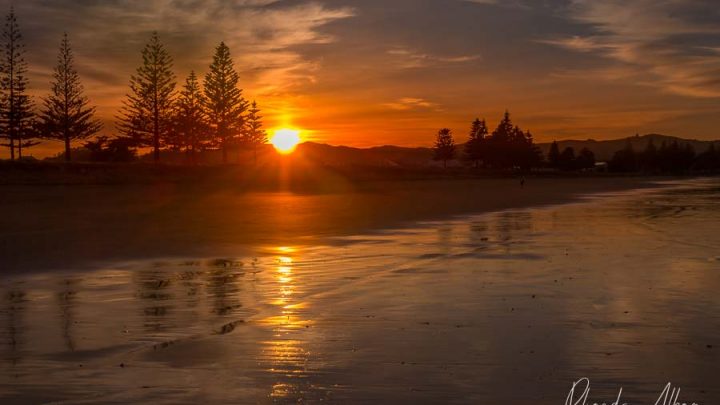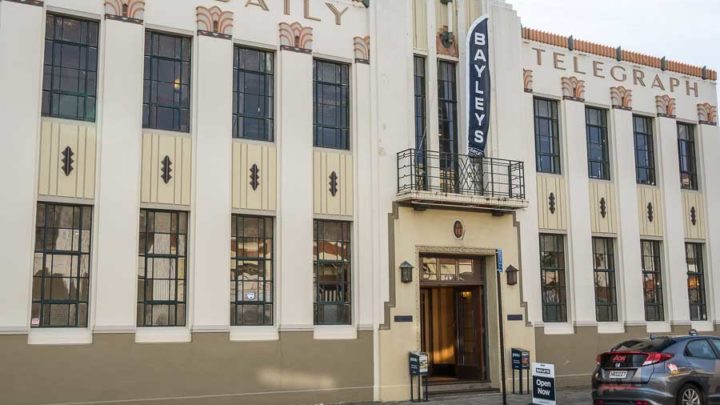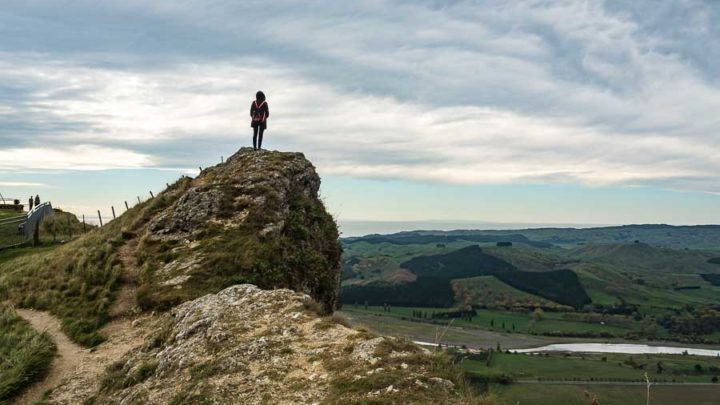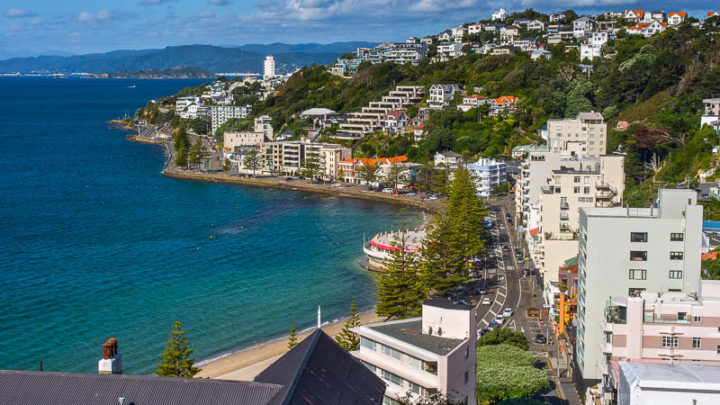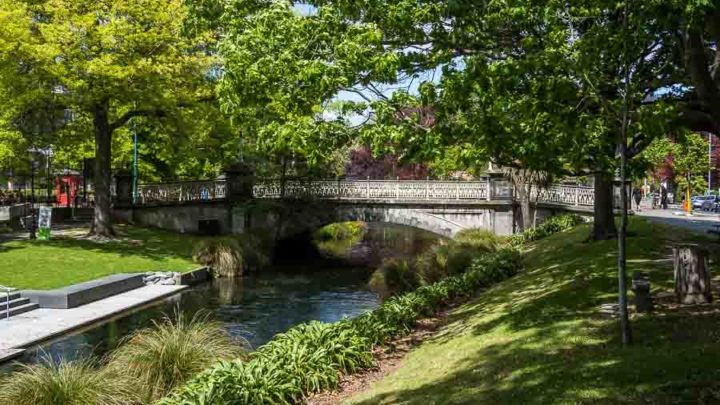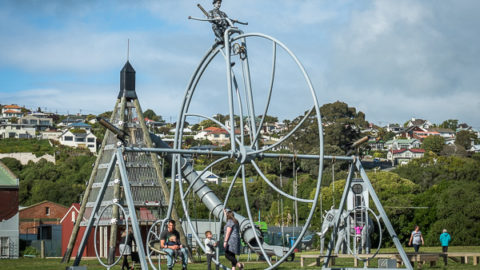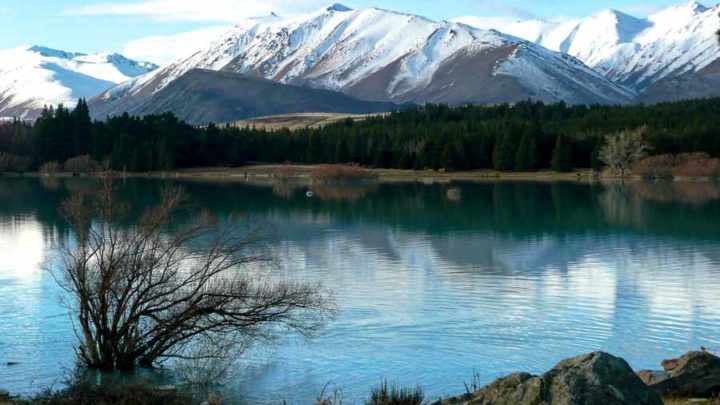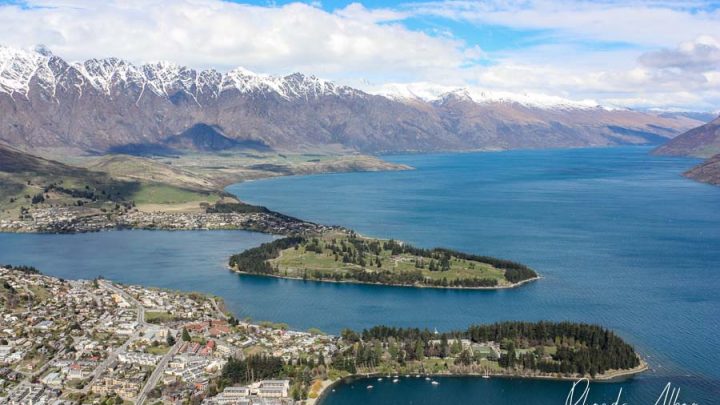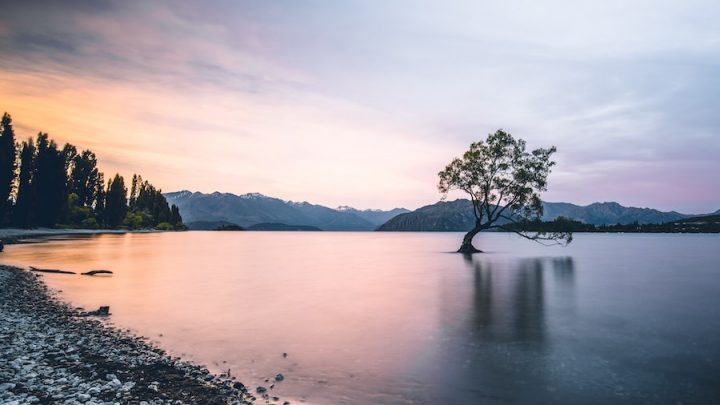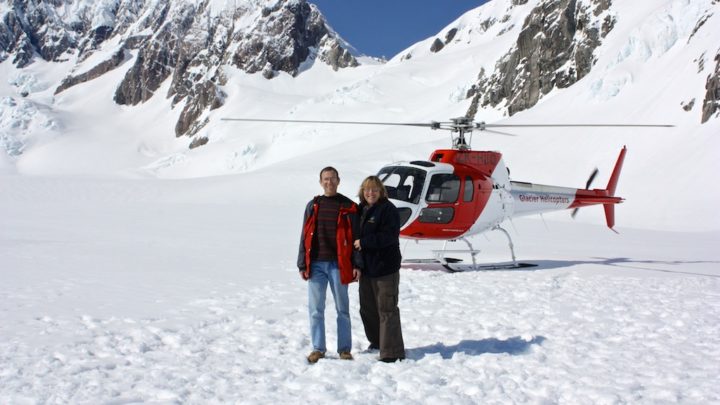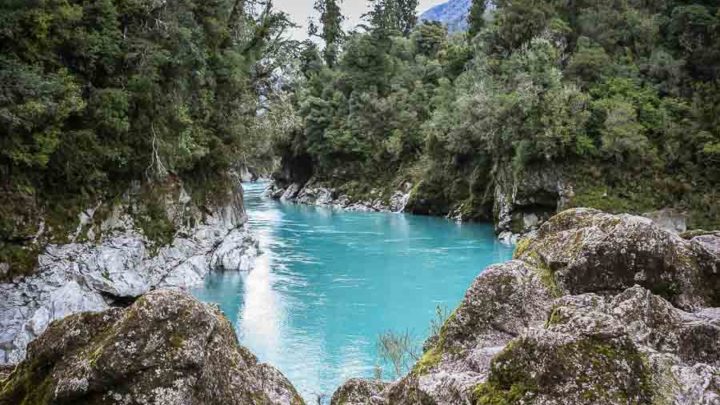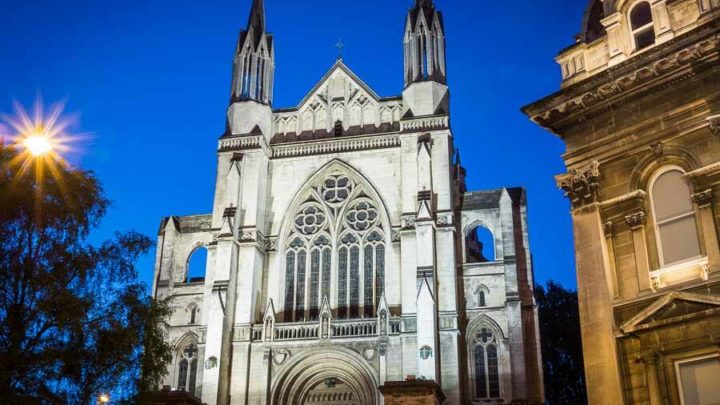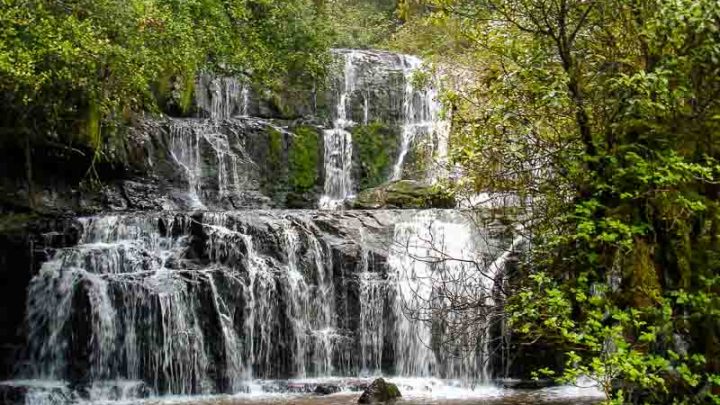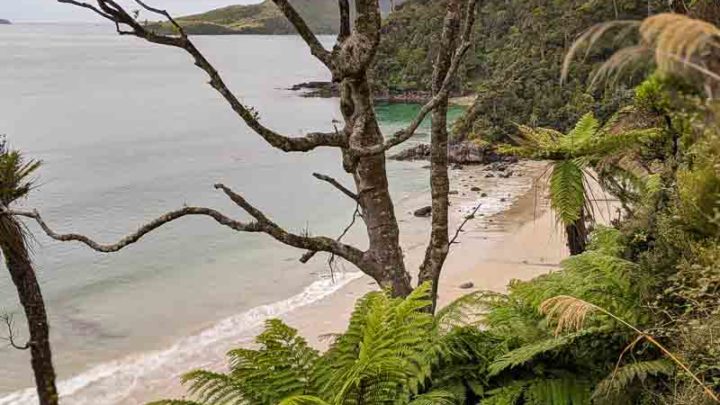If New Zealand is on your bucket list, you are in the right place to start your planning.
We have lived in New Zealand since 2003, and have extensively explored the country with the knowledge of a local and the curiosity of a tourist. This gives us a unique perspective to offer you all of the New Zealand travel tips you need for a great visit.
Whether it’s the ever-changing and spectacular scenery, unique birdlife, extreme sports, Lord of the Rings, or the All Blacks that entice you to visit, you won’t be disappointed.
While there are plenty of people writing about how to come here on the cheap, this page is for those who travel like us. That is typically four-star accommodations, self-driving, and enjoying unique opportunities.
What’s on this page[Hide][Show]
First, let us whet your appetite with a few New Zealand highlights…
Planning a visit to New Zealand
Long and narrow, New Zealand’s two main islands cover a diverse landscape ranging from endless coastlines to ski fields. New Zealand is glaciers, geysers, subtropical rainforests, volcanoes, and farmland.
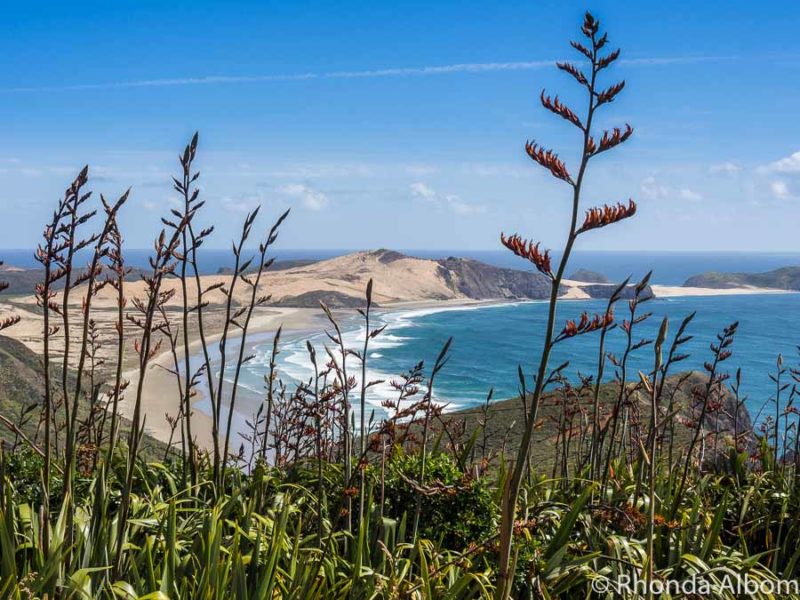
Where is New Zealand?
Nearly 2,000 kilometres east of Australia, New Zealand is somewhat isolated from the rest of the world. While a disadvantage for travel, those of us who live in New Zealand enjoy a lower population density, fewer dangers, and an outdoor lifestyle.
New Zealand travel tips: quick reference
- Emergency number: 111
- Language: English is the primary language
- Other official languages: Maori, New Zealand Sign Language
- Currency: New Zealand dollar (NZD)
- Credit cards: Mastercard and Visa are widely accepted
- Electricity: 240V 50Hz through Type I connectors (same as used in Australia and Argentina)
- Telephone country code: +64
- Water: Tap water is safe to drink
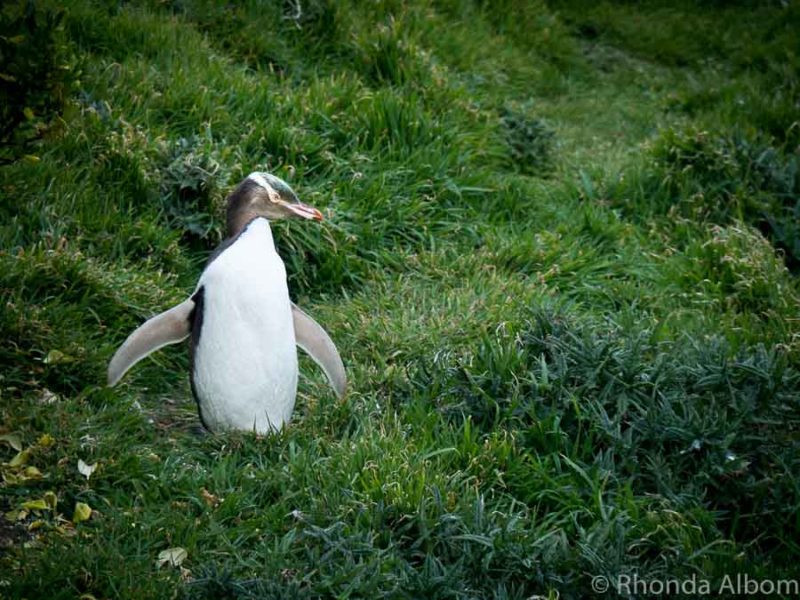
Best time to visit New Zealand
While in many ways, summer is the best time to go to New Zealand, it’s also the busiest and most expensive. Check Metservice to see the current weather and the next 10-day forecast.
New Zealand Seasons
December to February – Summer
- NZ Summer is high season.
- Average temps: 20–25C.
- Long, sunny days, little rain. More crowded.
- Requires booking ahead.
March to May – Autumn
- NZ Autumn is a swing season.
- Average temps: 17–21C.
- Less rain than winter.
- Fewer tourists.
- Less planning required.
June to August – Winter
- NZ Winter attracts skiers.
- Average temps: 12–16C.
- Colder on the South Island.
- Shorter days, rains often.
- Ski locations often require booking ahead.
September to November – Spring
- NZ springtime is a swing season.
- Average temps: 16-19C.
- Tends to be windy.
- Fewer tourists.
- Less planning required.
Still want more details, find them here: When is the Best Time to Visit New Zealand?
New Zealand holidays that affect travel
In addition to more travellers leading to longer queues, bigger crowds, and more expensive accommodations, many restaurants and bars add a surcharge on public holidays.
- Christmas and New Years: The two weeks surrounding these holidays offer great weather and are the country’s busiest travel time. Schools are out, and many businesses close for the season.
- Easter: There are three public holidays on Easter weekend: Good Friday, Easter Sunday, and Easter Monday. Plus, primary school students also get Easter Tuesday off of school.
- School Holidays: School in New Zealand is year-round, starting in February and ending before Christmas, with four 10-week terms. Term breaks are typically two weeks long, and during this time. Many Kiwi families travel. Click here to check if it is school holidays on the dates you want to travel.
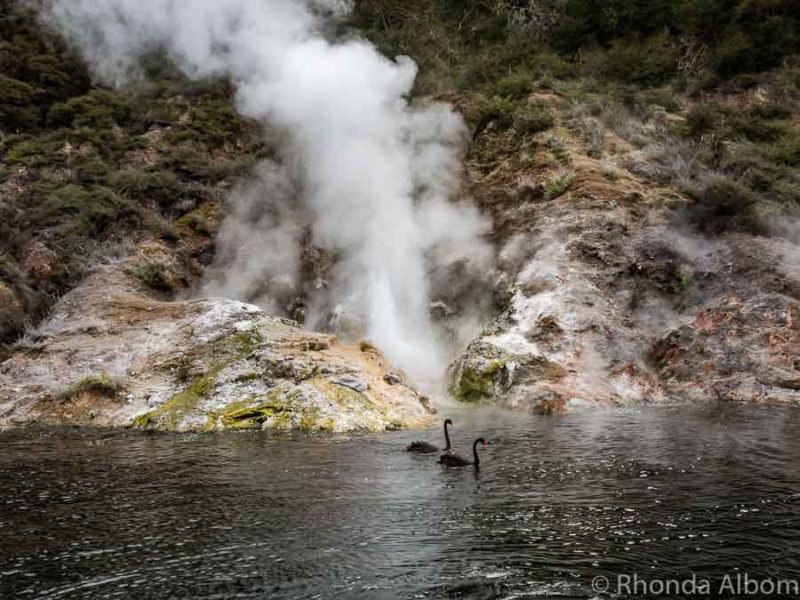
New Zealand travel tips: Know before you go
Visas and entry
Entry requirements to New Zealand differ based on the citizenship and residency of visitors. The newest change to the system took effect on October 1, 2019, and requires nearly all visitors (even cruise passengers) to obtain either a visa or an NZeTA. To be sure you know the current rules for your situation, we recommend reading the official information directly from New Zealand Immigration.
What to bring to New Zealand
Overall, New Zealanders are pretty casual, and just about anything goes. Sporty for the daytime and smart casual for evenings should cover you for nearly everything you do. You will want a good pair of walking shoes, a sun hat, and clothing layers.
As the weather is often unpredictable, a light rain jacket and/or an umbrella is recommended. In general, packing for New Zealand is easy. We always travel light. Therefore, our basic kit for New Zealand is similar to our standard packing list, with a few minor adjustments.
Get a free copy of our New Zealand packing list when you sign up for our newsletter.
What NOT to bring to New Zealand
More important than what to bring is what not to bring. New Zealand has strict biosecurity guidelines. Remember to declare all food items, even what you take off the plane. In addition, clean dirt off of all camping gear and hiking shoes before arrival. Check New Zealand’s immigration page for details on what to declare or watch this video:
Best places to visit in New Zealand
Choosing the best places to visit in New Zealand starts with what you hope to get from your New Zealand travel. This list is presented from the top of the North Island to the bottom of the South Island, highlighting our favourite destinations.
Follow the links for details on what to see and do, where to stay, and other local recommendations for each destination below.
Map of all our NZ road trips
Start with our favourite NZ road trip itineraries, listed on a different page from north to south.
Cape Reinga
The stunning top of the North Island of New Zealand is a spiritual location for the indigenous Māori people, filled with interesting history and legends. From the famous Cape Reinga lighthouse, we can look out at the meeting of the two major bodies of water, the Tasman Sea and the Pacific Ocean.
Bay of Islands
This impressive enclave of 144 islands is a popular beach destination for Kiwis. The region is home to both New Zealand's first capital (Russell) and the Waitangi Treaty Grounds. It was here that the Māori chiefs and Britain’s representatives signed the documentation creating New Zealand.
Auckland
Nicknamed the City of Sails, Auckland is New Zealand's largest city and home to more than one-third of the country's population. It's the port of entry for nearly all international visitors, and worth a stay for a least a night or two.
Coromandel peninsula
Laidback and full of impressive natural attractions like hot water beach and Cathedral Cove, the Coromandel peninsula is full of surprises. To fully enjoy this region, take it slow.
Tauranga and Mt Maunganui
A popular New Zealand cruise port, the Bay of Plenty holds the country's top-rated beach as well as being the primary kiwifruit growing region. A boat ride (or small plane flight) away sits the world’s most accessible active marine volcano.
Rotorua
Rotorua is a geothermal wonderland like nowhere else. Geysers, bubbling mud, and otherworldly formations highlight this area that is also a playground for adventure seekers, a place to learn about Māori culture, and a place to relax.
Taranaki
While not often on the tourist route, the Taranaki region is one of my favourite regions to visit. Located at the centre of the west coast of the North Island, it is the area surrounding Mt Taranaki. There are amazing beaches, wonderful hikes, many food options, impressive gardens, and so much more. It's a bit of a well-kept secret.
Gisborne
Gisborne is more than just a starting point for an East Cape road trip. It's home to lots of history, the National Arboretum, waterfalls, and plenty of other attractions, all interwoven with Māori culture. Gisborne is where we enjoyed the world's first sunrise marking a new day.
Napier
Napier is the self-proclaimed art deco capital of the world. It's a coastal town in the Hawkes Bay region, an area dotted with stunning scenery and interesting artefacts.
Hawkes Bay
Hawkes Bay region is filled with award-winning wineries, art deco architecture, and enchanted sweeping agricultural and coastal views.
Wellington
Wellington is the southernmost capital city in the world. A modern city, it is home to botanic gardens, the national museum, and the special effects studio responsible for Lord of the Rings. It's my favourite weekend getaway city.
Christchurch
Christchurch is the South Island's largest city. This British-influenced town is nicknamed New Zealand's Garden City. Reinvented, its post-earthquake redevelopment is creating a modern metropolis.
Oamaru
New Zealand's steampunk capital has a Victorian precinct that will take you back in time. One of the highlights is the playground with a swingset in the shape of a penny-farthing, but there is so much more to see.
Lake Tekapo
Vivid turquoise water surrounded by snow-capped mountains mark one of the most beautiful lake regions in New Zealand. Also here, a new Māori astronomy centre in the world's largest dark sky reserve.
Queenstown
Whether you looking for heart-pumping adventure, romantic evenings, or family fun, you will find it amongst the things to do in Queenstown. It's home to world-class ski fields and golf courses, the world's first commercial bungy jump, and the world's best burger (self-proclaimed, but we agree).
Wanaka
Wanaka is an epic blend of outstanding scenery, classic hikes, and adventure opportunities. A skier's paradise in winter, there are plenty of things to do all year long.
Franz Josef, Fox, & Tasman (Mt. Cook) Glaciers
Fox, Franz Josef, and Tasman are amongst the largest of the over 3000 glaciers in New Zealand. Fox Glacier is fed by four alpine glaciers and travels into lush rainforest ending only 300 meters above sea level.
Hokitika
Hokitika is an artist community located on the west coast of the South Island near a stunning gorge of the same name. The town is probably best known for its annual wild foods festival.
Dunedin
Dunedin is a Scottish-influenced university town alongside a peninsula teeming with wildlife including giant albatross, adorable little blue penguins, sea lions, and countless bird species.
Catlins
The bottom of the South Island holds a magnificent subtropical rainforest filled with waterfalls and endangered species. While one can drive through the region in just a few hours, it's better to take it slow.
Stewart Island
Stewart Island is south of the South Island. It's a paradise of nature and one of the few places where kiwi birds are often spotted during daylight hours. Getting here takes a bit of planning but is worth the effort.
Read next: 15 Most Beautiful Places to Visit in New Zealand to Inspire You
Travelling within New Zealand
Driving in New Zealand
In New Zealand, we drive on the left side of the road. If you are used to driving on the other side, ask your partner to remind you to keep left at every turn for at least the first day. The NZ transportation agency offers these driving guidelines for visitors.
New Zealand speed limits on the open road are up to 110 kph (62 mph). However, they are slower as you pass through towns, or on narrow, windy, or rural roads. As a result, it will usually take longer to get anywhere than you estimate. Here’s an NZ time and distance driving calculator from the NZAA
Read next: Getting Around New Zealand: Exploring Options for Domestic Travel
Renting a car
Renting a car in New Zealand is easy, but be sure to read the rules and guidelines for driving in this country (section just above). Most international and several local companies rent vehicles in New Zealand.
RentalCars.com shares options from the most reputable dealers, allowing you to compare prices and see customer ratings all on one screen. We have been using Rental Cars worldwide since we discovered them, and always found everything to be as expected when we arrive. Plus, we have been super happy with the customer service response on rare occasions when we need them. Compare prices at RentalCars.com
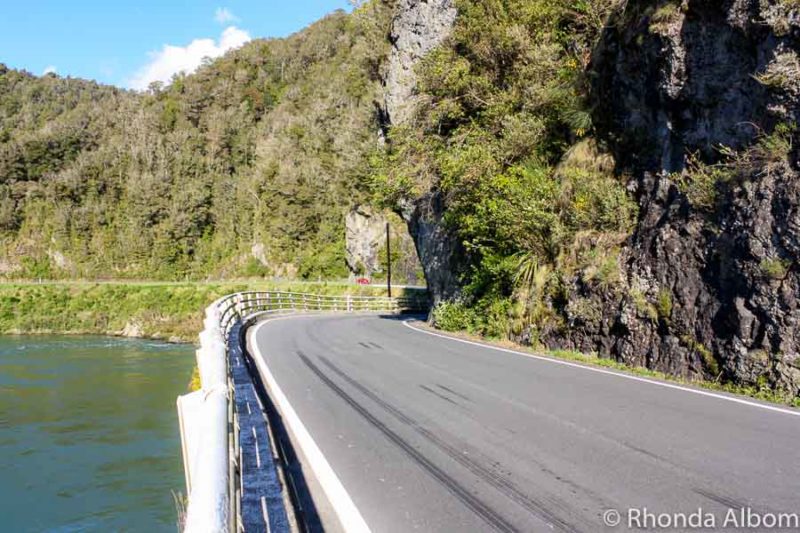
Other New Zealand transportation options
Fly between cities: If you are visiting for a limited time, focusing only on one region, or only exploring the South Island, flying from Auckland is a good choice. We typically fly on either Air New Zealand or Jet Star and find the best prices on Expedia flights, although we usually book direct.
Ferry service: Travel between the North and South Islands is either done by air or ferry. While the ferry is more fun, it does require booking in advance, especially if you are travelling in high season or bringing a car across. Both ferry companies offer similar services, and we always choose the one that is cheaper on the day we want to travel. We check here for the best ferry prices.
Bus: The bus is a popular way to travel the country, especially for those visitors on a tight budget. There are several long-distance and scenic bus companies in New Zealand. Some even offer free wifi on board.
Train travel: There is a train from Auckland to Wellington on the North Island, but we have yet to give it a try. However, we have enjoyed scenic train rides on the South Island.
Reserve your flight, bus or train options here
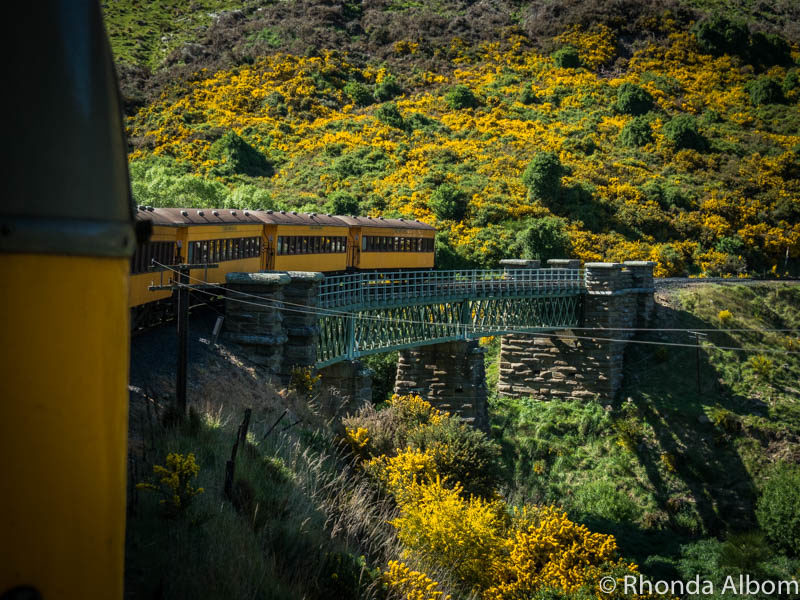
Go with a guide: New Zealand travel tours
We think New Zealand is easy to explore on our own.
However, tours are a better option for people who don’t like to do their own planning, who enjoy historical commentary and those who don’t want to drive on the left. The better tours in New Zealand are not cheap.
Here are a couple of top-rated options. For more tours, we recommend checking Viator, a trip advisor company.
5-Day South Island Tour from Christchurch: Travelling from Christchurch via bus and train, you will visit Mt. Cook, Milford Sound, Franz Josef Glacier, and Queenstown. If you have limited time, this tour will get you some spectacular scenery and fabulous adventures, but be aware that you will spend a lot of time in transit.
⇒Check the full itinerary and reserve this 5-day South Island tour
Design Your Own Tour – private: This personalised and customised tour puts you in charge. You decide where you want to go and how you want to travel (from self-drive to fully chauffeured and guided) and the experts design a tour to fit your needs from 1 to 21 days.
⇒Check the reviews and reserve your Amazing New Zealand Itineraries & chauffeur-driven tours
21-Day Kakapo All New Zealand – Small Group: This 21-day tour does it all from North to South. Starting in Auckland and ending in Christchurch, it includes 20 nights at 4-star accommodations. This is the most complete tour we have found to date. You will travel and see magnificent mountains, glaciers, sounds, wildlife, historic locations, Maori culture, and much more.
⇒Check the full itinerary and reserve this 21-day tour
New Zealand travel tips: phones and safety
Mobile phones and wifi in New Zealand
Okay, nowhere is perfect. Many visitors complain about New Zealand’s lack of readily available unlimited wifi in hotels or cafes. Even worse (especially if you have teenagers within your travelling party), sometimes there is no wifi at all.
Visitors also complain that the internet is expensive. Locals will confirm that New Zealand’s internet access is overpriced compared to much of the rest of the world.
Prepaid SIM cards are available through several different companies. We use One (formerly called Vodafone). Although they are not the cheapest, we have found them to be reliable. Best of all, they offer special plans for visitors (that are in some ways better than we can get domestically), and you can order it today and have it waiting for you at your choice or airports. Reserve your ONE SIM card in advance here.
If your phone supports eSIM cards (check here if you don’t know) that might be the ideal solution. With coverage in 200 countries and regions, we have had great luck with Airalo. They have options for country or region, so you may only have to purchase one, even if you are travelling to multiple countries. Check the options or reserve your eSIM here.
Safety in New Zealand
New Zealand appears on just about every list of the world’s safest countries. However, this is not an invitation to be stupid. Just like anywhere else, if you leave your wallet, computer, or phone laying around and walk away, chances are good that someone will help themselves to it.
Travel Insurance
We don’t travel without insurance. It’s a personal choice that has paid off well for us.
New Zealand covers visitors injured here; however, visitors should not overlook travel insurance for illness, property loss, or disrupted air travel.
We have partnered with InsureMyTrip, because they are the best option to compare plans and find the right coverage for you. They have thousands of travel insurance plans and a one-of-a-kind recommendation engine to help travellers find the right plan. Most importantly, they will be there for you before, during and after your trip if you should need anything – especially help with a claim with the provider. Get your free quote from InsureMyTrip
New Zealand travel tips: bars and restaurants
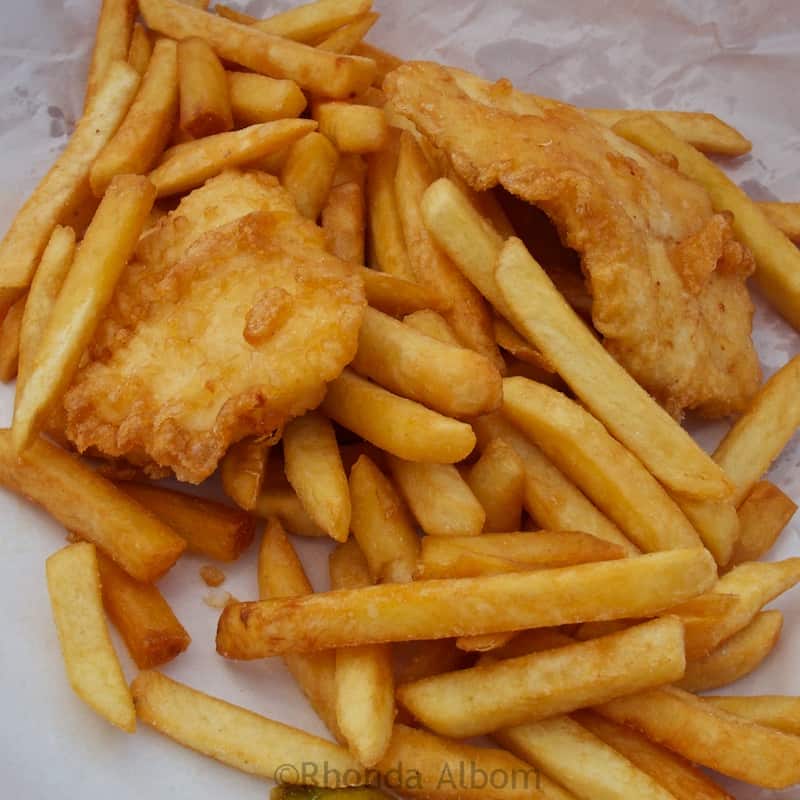
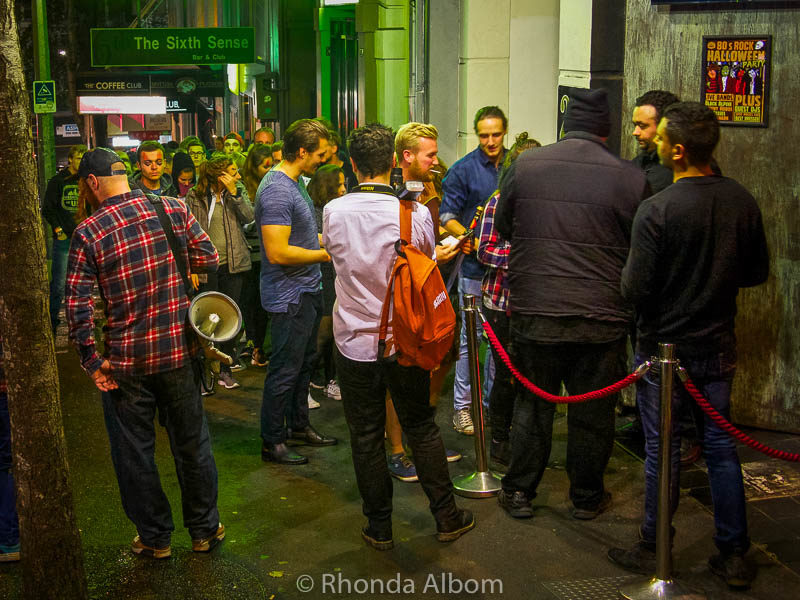
- The legal age to purchase alcohol in New Zealand is 18. International visitors need a passport as proof of age to enter bars. Kiwis need an official New Zealand ID.
- Tipping in New Zealand restaurants, hotels, spas, or taxicabs is not customary as wait staff are paid by the same rules as everyone else. Some restaurants (especially those in tourist areas) add a “tip” line on the bill. Locals ignore it.
- Trendy restaurants reserve tables for those who have booked in advance and will often turn away customers rather than start a waiting list. It’s not uncommon for friends to turn a meal into an evening of drinks and laughter, thus spending hours at their table. Patrons are made to feel welcomed, not rushed. As a result, customers need to request their bill (or often go up and pay) to signify they have finished.
- Prostitution is legal in New Zealand, and you can find brothels in most cities, often affiliated with strip clubs.
- Marijuana and other drugs are still illegal in New Zealand.
More New Zealand travel tips that might surprise you
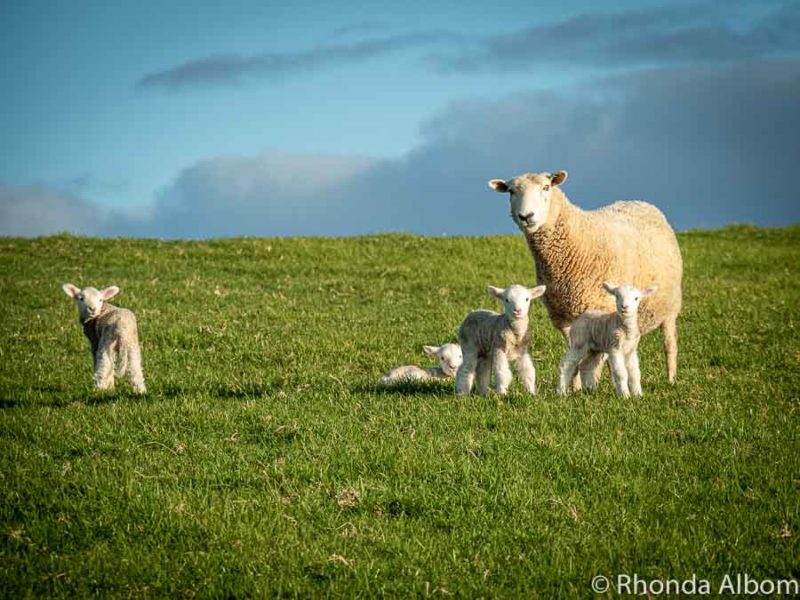
- On a global scale, New Zealand is an expensive place to visit. Accommodation, meals, entrance to tourist activities, and even a daily coffee may cost more than you expect.
- The sun’s dangerous rays are stronger in New Zealand than in most other parts of the world. Sun protection is advisable. This includes sunscreen, sunglasses, a hat, and a cover-up on the beach.
- Children can and will be barefoot just about anywhere in New Zealand, and you might see barefoot adults too.
- Taxes are included in the listed price of goods and services. Unfortunately, New Zealand doesn’t offer a tax-back scheme.
- A few local terms that might come in handy: a “Kiwi” is a person from New Zealand (different from kiwi fruit or kiwi bird), an entrée is an appetizer, a café generally serves lunch and closes by 4 pm, and a “cot” is where a baby sleeps. Click here for my humourous look at New Zealand slang.
- While New Zealand has only one rarely seen poisonous spider (found in the North), there are plenty of mosquitos and tiny insects that leave annoying and itchy bites. Use insect repellent.
- As an expat living here, I often see things differently and wrote about my adjustments to Kiwi life here.
- If you are a fan, there are plenty of Lord of the Rings film locations that you can visit.
Curious about some of the lesser-known yet interesting facts about New Zealand? Check out this list of fun NZ facts.
Where to ask questions or just see more of New Zealand
Save for later
If you enjoyed this article, please share it on social media and save it for later on Pinterest.
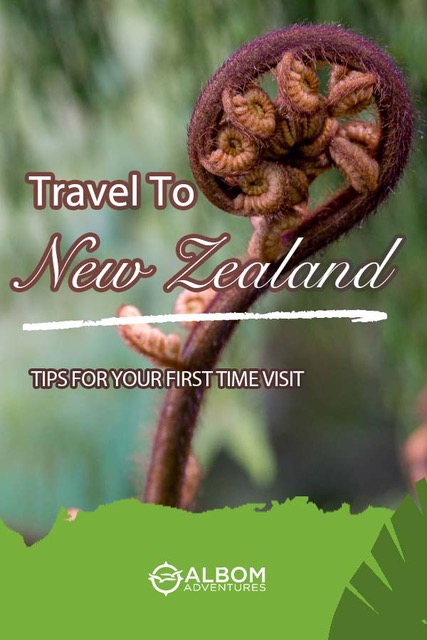
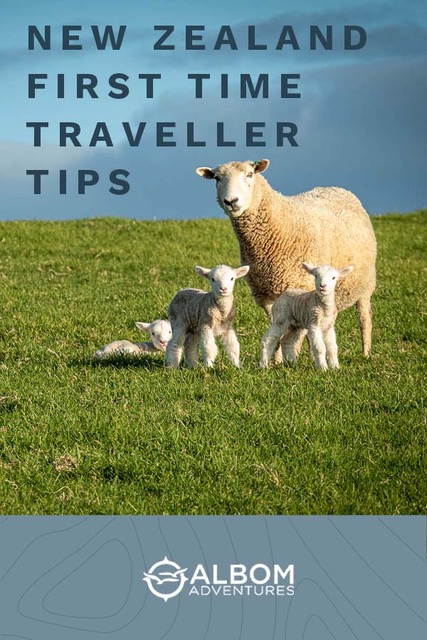
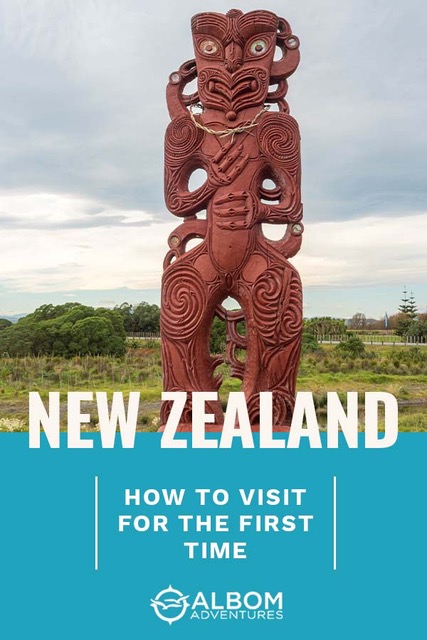
You might also like
Disclaimer: We worked with local tourism boards throughout New Zealand. We are frequently provided with complimentary entrances, tours, or sample items to aid in the writing of Albom Adventures. However, the opinions expressed here are strictly our own.

